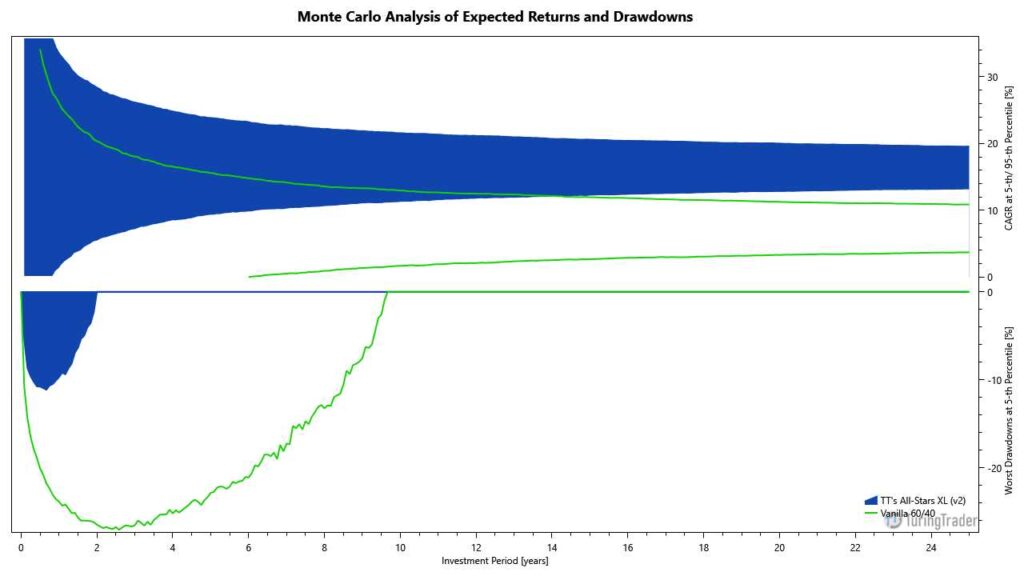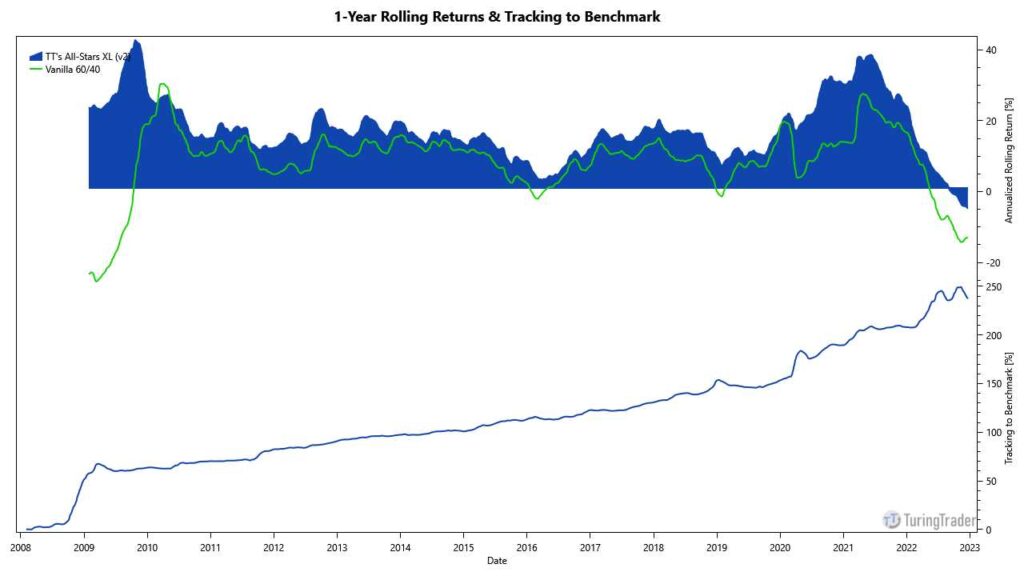Summary
- Objective: balanced growth
- Type: mean-variance optimization
- Invests in: ETFs tracking equities, fixed income, hard assets
- Rebalancing schedule: monthly
- Taxation: 80% short-term capital gains
- Minimum account size: $10,000
Wouter J. Keller is a researcher at the VU University Amsterdam and the CEO of Flex Capital, an asset management firm based in the Netherlands. Together with Adam Butler and Ilya Kipnis, he published the Classical Asset Allocation (CAA) strategy in a paper released in May 2015.
Keller’s Classical Asset Allocation aims to create an optimally diversified portfolio which maximizes return for a given level of risk, but with a tactical twist. To achieve this goal, Keller’s strategy performs mean-variance optimization over a lookback period of 12 months with a set of 8 ETFs spanning all major asset classes.
CAA rebalances once per month, making the strategy low maintenance.
Performance
This table shows the portfolio’s key performance metrics over the course of the simulation:
The following chart shows the portfolio’s historical performance and drawdowns, compared to their benchmark, throughout the simulation:
This chart shows the portfolio’s annual returns:
The following charts show the Monte-Carlo simulation of returns and drawdowns, the portfolios 12-months rolling returns, and how the portfolio is tracking to its benchmark:


Asset Allocation
The portfolio last required rebalancing after the exchanges closed on @last-rebal@. Due to fluctuations in asset prices, the exact allocations vary daily, even when no rebalancing occurred. The current asset allocation is as follows:
Sign up for our FREE Basic membership to see the asset allocation.
Sign up for our FREE 14-day trial to see the asset allocation.
Strategy Rules
Keller’s strategy comes in multiple flavors, which mostly differ in the size of their universes. Our implementation of the strategy matches the publication’s CAA-N=8-TV=5% variant. The rules for this strategy can be summarized as follows:
- trade equities from 5 different markets, high-yield bonds, 10-year Treasuries, and T-bills
- rebalance monthly
- estimate returns and the covariance matrics of all assets over a lookback period of 12 months
- calculate the Efficient Frontier using Markowitz’ Critical Line Algorithm
- find the portfolio with 5% annualized target-volatility along the Efficient-Frontier or the Capital Market Line
For full detail and the rationale behind Classical Asset Allocation refer to Keller’s fabulous paper. Further, the C# source code for the strategy is included in the TuringTrader.org open-source project repository.
The central concept of the Classical Asset Allocation is using Mean-Variance Optimization to construct portfolios. This concept dates back to 1952 and Harry Markowitz’s work on modern portfolio theory. Unlike this original work, which uses long-term estimates for returns and covariance, CAA applies mean-variance optimization to 12-months rolling periods. We like this concept a lot, but unfortunately see issues with it.
Diversification
Classical Asset Allocation focuses on optimal diversification and achieving low volatility. Because this approach shows its real value only in times of market turmoil, investors should contemplate performance over the full economic cycle.
Mean-Variance Optimization promises to maximize the advantages of diversification. Unfortunately, CAA does not always achieve that. In our testing, we found that the methodology tends to flip-flop between assets, in cases where these are highly correlated and of similar momentum. Under these circumstances, it seems including all of the affected assets would lead to more stable allocations and better diversification.
Further, we find that in situations where the volatility of assets is around or below the target volatility, Classical Asset Allocation degenerates to momentum-ranking. In contrast to the original intent, this behavior does not account for tail risk and changes in volatility. CAA attempts to mitigate this by setting maximum weights for risky assets, but we believe this to be an incomplete solution.
Returns & Volatility
Over the last economic cycle, beginning shortly before the 2008 recession, the strategy has done a remarkable job in managing volatility. Especially, the Monte-Carlo simulation shows a risk profile, which is consistently below that of a passive portfolio.
Unfortunately, this smooth performance comes at a price: In absolute terms, Classical Asset Allocation underperforms a passive 60/40. However, CAA‘s risk-adjusted returns are significantly higher, making the strategy very appropriate in situations where capital preservation is key.
Account & Tax Considerations
Similar to other strategies rotating assets, Keller’s strategy will frequently cause taxable events. However, CAA does stay invested in some winners long enough to qualify for long-term treatment of capital gains. Still, CAA will work best in tax-deferred accounts.
Classical Asset Allocation invests in up to 8 ETFs simultaneously. To do so, it requires an allocation of no less than $10,000 to function correctly.
